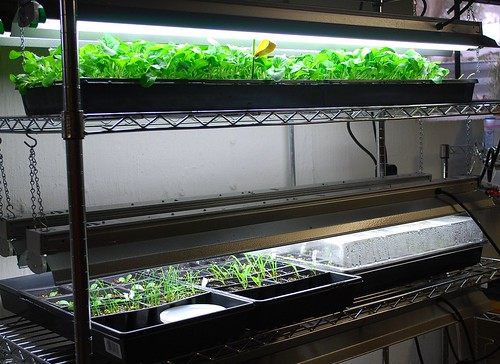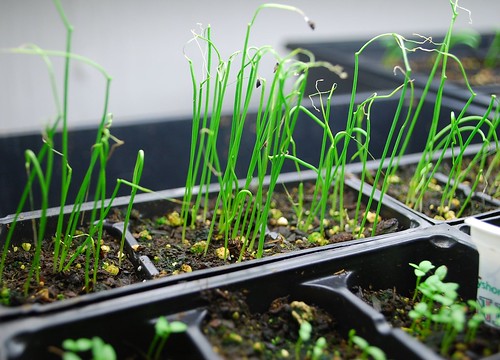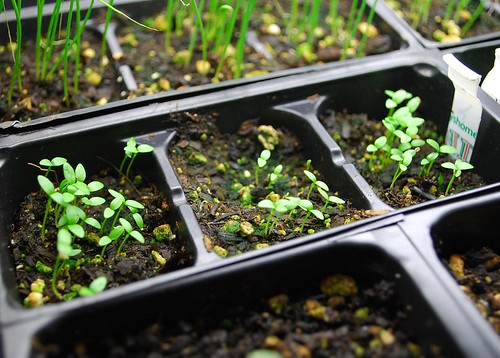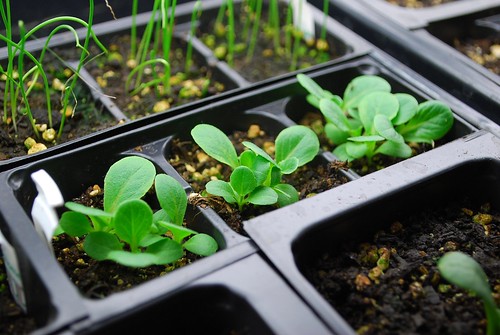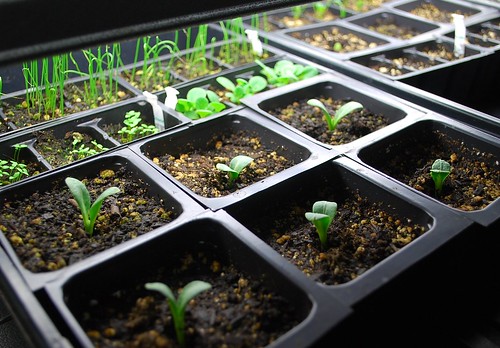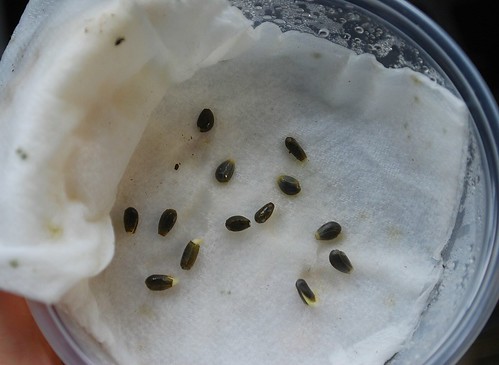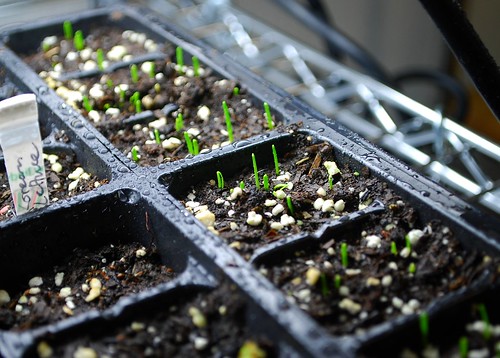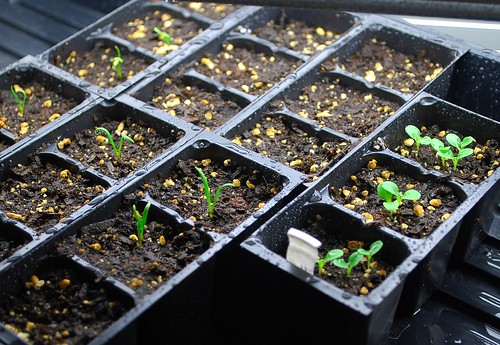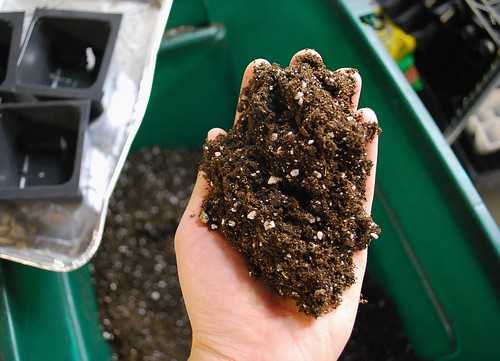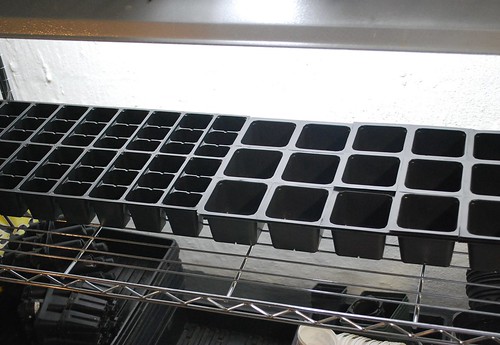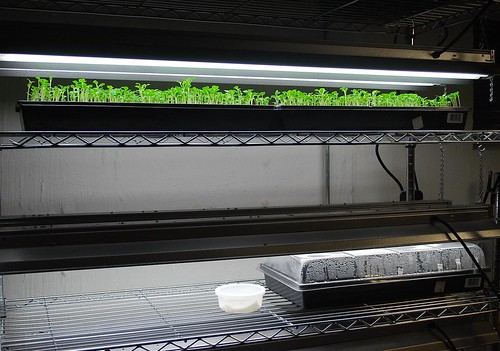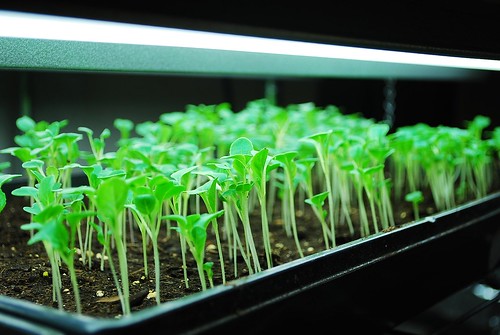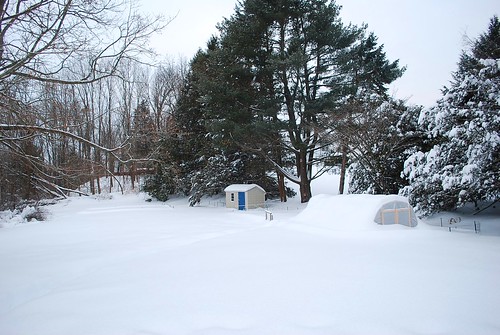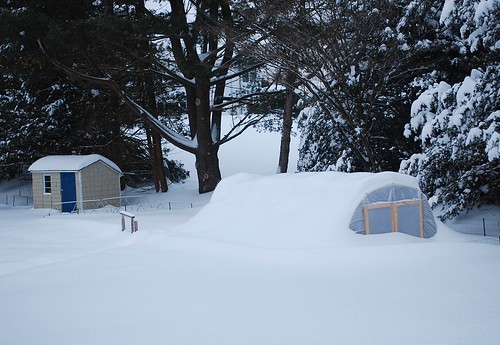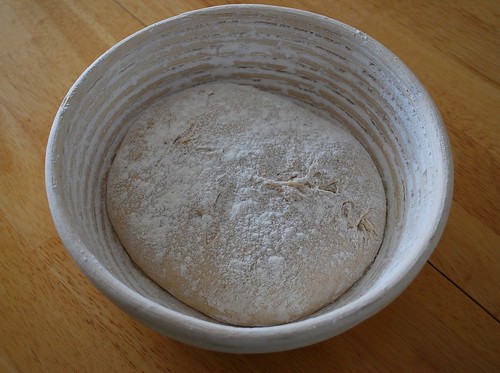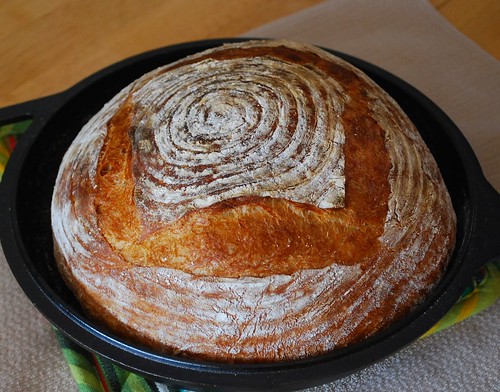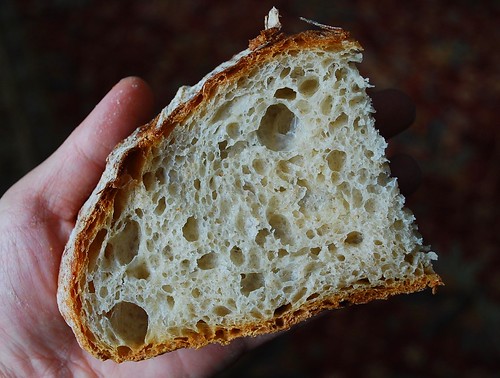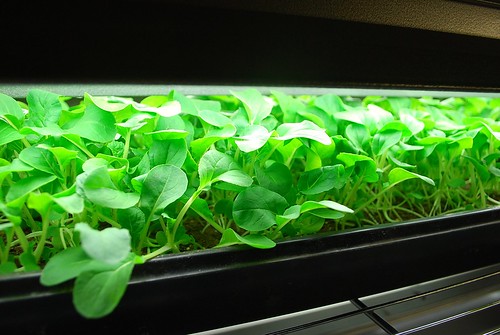
Not much happening on the gardening front I'm afraid. Just as I was starting to believe that Mr. Groundhog may have been right this year, we got seven more inches of snow this past weekend. I can't complain though - the white stuff is melting slowly but surely and best of all, we haven't had the huge amounts of rain we had this time last year that caused our backyard to flood for a month. I'm still keeping my fingers crossed.
Anyway, I thought I'd post the recipe for my shrimp wonton soup. It's one of my favorite soups to make for the family. I love to garnish the soup with some bok choy microgreens, which adds freshness and crisp. Scalding them in the hot soup broth cooks them just enough. Delicious!
Shrimp Wonton Soup Recipe
Soup Broth
6 cups unsalted or low-sodium chicken broth (preferably homemade)
1/2 medium onion cut into large wedges
2 inch piece ginger cut into 1/4 inch slices
2/3 inch cube rock sugar (or 1 tablespoon white sugar)
1 tablespoon soy sauce
1 teaspoon fish sauce
5 oz package of oyster mushrooms cleaned and separated
kosher salt to taste
Fried Garlic
2 large cloves of garlic finely chopped
1 tablespoon of canola or vegetable oil
1 teaspoon of sesame oil
2. To prepare the fried garlic, heat the canola and sesame oil in a small pan on medium-low heat. Add garlic and stir-fry for a few minutes until it is evenly browned and develops a nutty aroma. (Be careful not to burn it! The garlic should be the color of roasted peanuts when done.)
2. In a medium stock pot, combine all of the above ingredients except for the oyster mushrooms. Add the fried garlic and flavored oil. Bring the soup to a boil and then simmer covered on low heat for at least 30 minutes. Add salt to taste. 10 minutes prior to serving, add the oyster mushrooms to the simmering soup.
Shrimp Wontons
30-36 wonton skins
1/2 lb shelled and de-veined raw shrimp
1/2 cup chopped scallions
2 tablespoons of chopped cilantro
1 tablespoon of tapioca starch (or cornstarch)
1 teaspoon soy sauce
1 teaspoon of salt
1 teaspoon of sugar
1/2 teaspoon of ground black or white pepper
1/2 teaspoon dark sesame oil
3. In a food processor or mini-prep, pulse the shrimp until it resembles a chunky paste. Transfer the ground shrimp to a large bowl and combined thoroughly with the remaining ingredients.
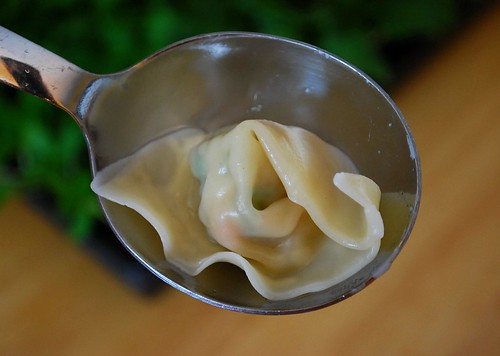
4. To make the individual wontons, brush the four sides of a wonton skin with a bit of cold water. Place about a teaspoon of shrimp filling in the center of the square. Fold the square in half to make a triangle, pinching the edges lightly to seal in the filling. Brush one corner of the triangle with water and join it with the opposite corner (pinching them together) to form a tortellini shaped wonton. (You can make these wontons ahead and store them in the freezer. To prevent the wontons from sticking to one another, freeze them in a single layer on a cookie sheet before storing them in a freezer bag.)
5. I find that 5 wontons are enough for a small serving, 7 for a large serving. To cook the wontons, bring a medium pot of salted water to a boil. You can cook up to a dozen wontons at a time but be careful not to to overcrowd them. Drop the wontons into the pot and the bring water back to a boil on medium high heat. Stirring gently, cook the wontons for 2-3 minutes until they float and the skins are cooked. (You can cook the wontons straight from the freezer but add another minute to the cooking time.) Using a slotted spoon, remove the wontons and place them directly into the serving bowls.
Garnishes
bean sprouts
Asian microgreens
chopped scallions
chopped cilantro
small wedges of lime (8 to a lime) - optional
6. Assembling the individual bowls - If using the bean sprouts, scald them in the hot cooking water for about 20 - 30 seconds. Remove with a slotted spoon and place a small handful on top of the wontons. Then place a handful of Asian microgreens over the bean sprouts. Sprinkle some chopped scallions and cilantro into each bowl and add the juice from one squeezed wedge of lime. Finally, pour about 1 to 1 and a half cups of the hot soup over everything. Serve immediately!

Variation - In place of the microgreens, you add 2 cups of sliced baby bok choy or napa cabbage directly into the simmering stock 10 minutes prior assembling the bowls.

